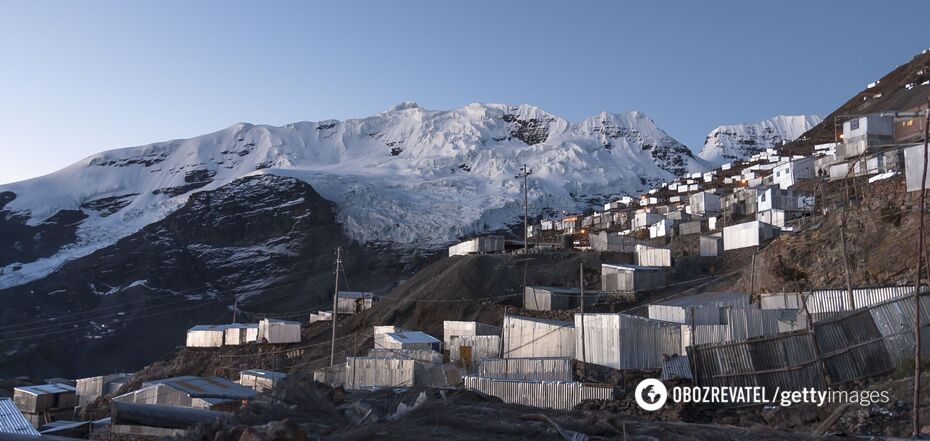News
The Devil's Paradise: what the highest habitable place on Earth looks like and what problems residents face there
The highest place on Earth where people live is located in the Peruvian Andes. It is called "The Devil's Paradise". The official name of the city is La Rinconada, and its 50,000 inhabitants live at an altitude of 5,000 m to 5,300 m above sea level.
Life in La Rinconada is extremely difficult: there is no running water, no sewage, and no garbage dump. Food is imported from lower areas, and electricity was installed in the city only in the 2000s, LiveScience writes.
The city is known for gold mining, having emerged as a temporary mining settlement over 60 years ago. But the price of gold is that residents have to live in extreme conditions with half the oxygen pressure of cities in the lowlands.
If you go up to the altitude where the city of La Rinconada is located, one of the first changes you will notice is an increase in your breathing and heart rate. This is because there is less oxygen in the air, so your lungs and heart need to work harder to nourish your tissues.
"When you're at an altitude of about 4500 meters, the same breath of air that you take down below contains about 60% oxygen molecules, so it's a lot of stress," explains Cynthia Bell, professor emerita of anthropology at Western Reserve University in Ohio.
Some people may develop a condition called acute mountain sickness (AMS) as the body tries to adjust to the reduced oxygen levels. This can cause symptoms such as headaches, fatigue, nausea, and loss of appetite. Usually, after a week or two at high altitude, a person's heart rate and breathing calm down a bit as the body begins to produce more red blood cells and hemoglobin to compensate for the low oxygen levels in the air.
However, highlanders, like those living in La Rinconada, seem to have adapted to the low-oxygen environment in many ways. For example, highlanders in the Andes typically have high levels of hemoglobin in their blood, making it thicker. While this allows Andeans to carry more oxygen in their blood, it also means they are vulnerable to developing a condition called chronic mountain sickness (CMS). This occurs when the body produces an excessive amount of red blood cells.
CMS can occur in people who live at altitudes above 3050 meters for many months or years and causes symptoms such as fatigue, shortness of breath, aches and pains. Approximately one in four residents of La Rinconada suffers from altitude sickness.
"The best treatment for altitude sickness is to travel at low altitudes. However, this is not always a viable solution if one has all the means of subsistence in a particular region. Regular bloodletting and taking a drug called acetazolamide, which reduces the production of red blood cells, can provide some relief for patients with CMS, although the safety and effectiveness of these treatments in the long term are still unknown," says Tatum Simonson, an associate professor of medicine at the University of California, San Diego.
Only verified information is available on OBOZ.UA Telegram channel and Viber. Do not fall for fakes!




























